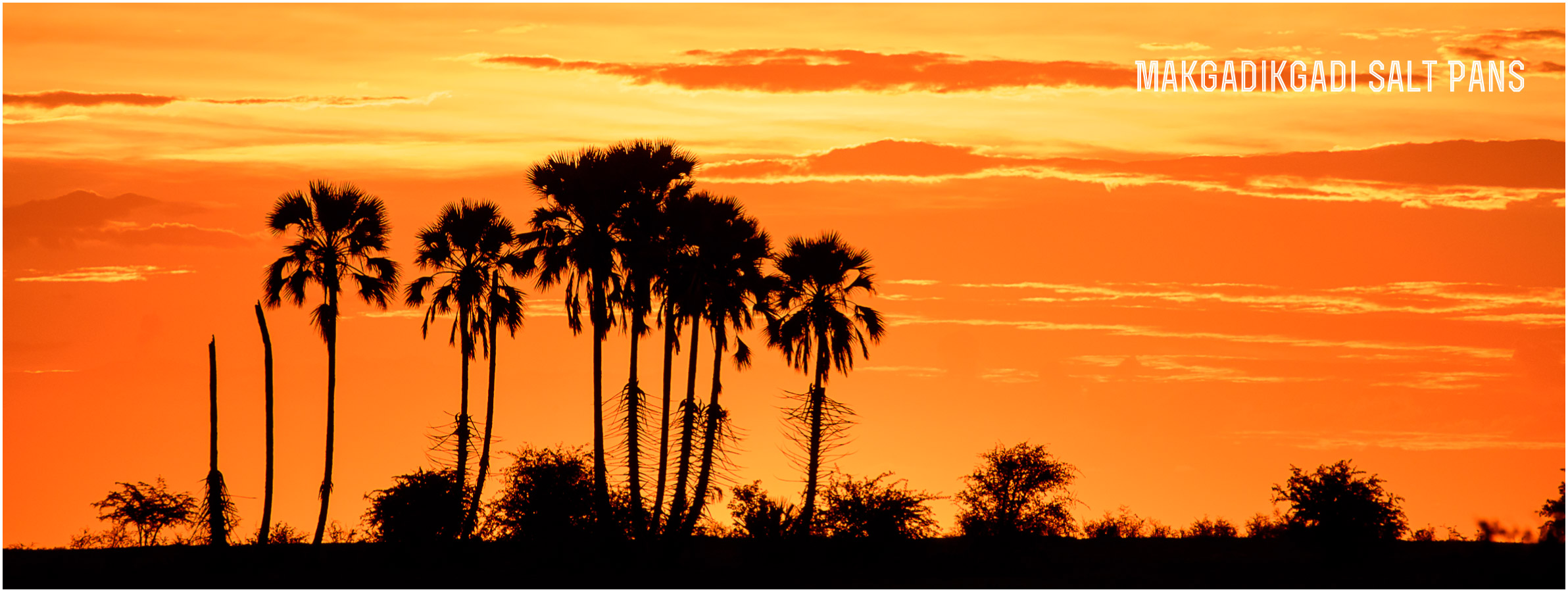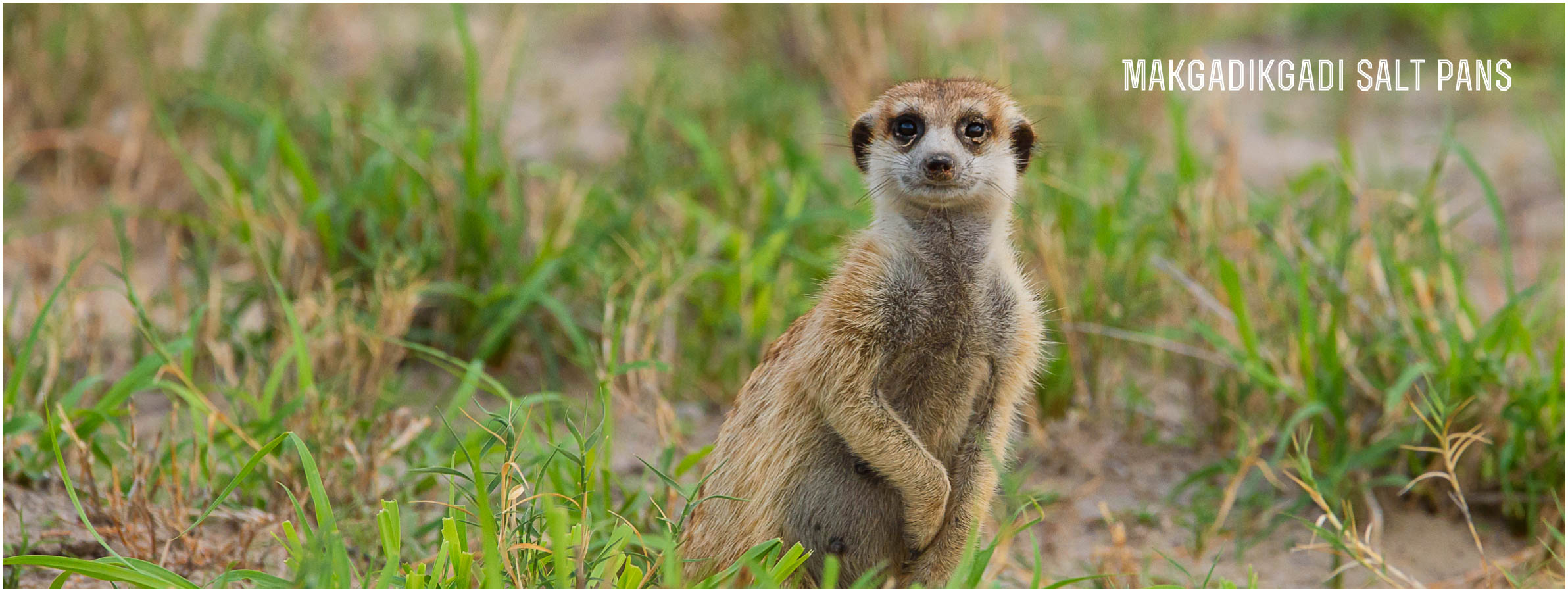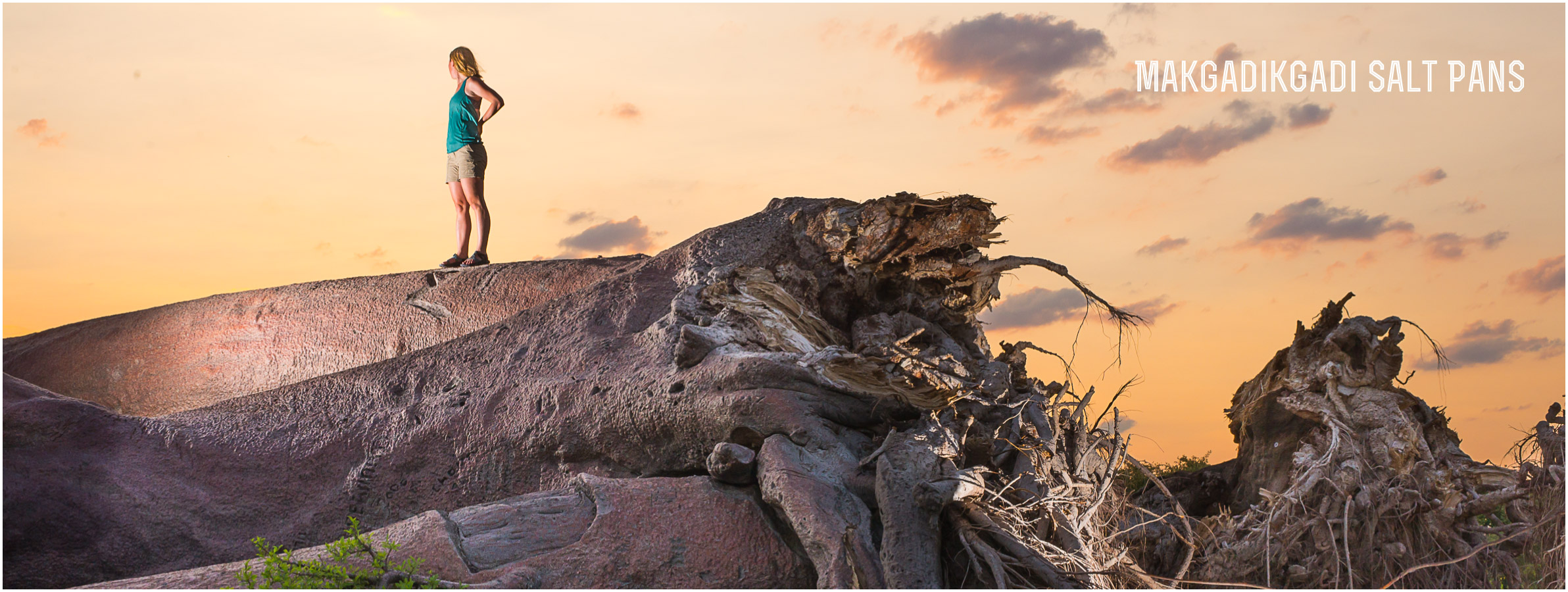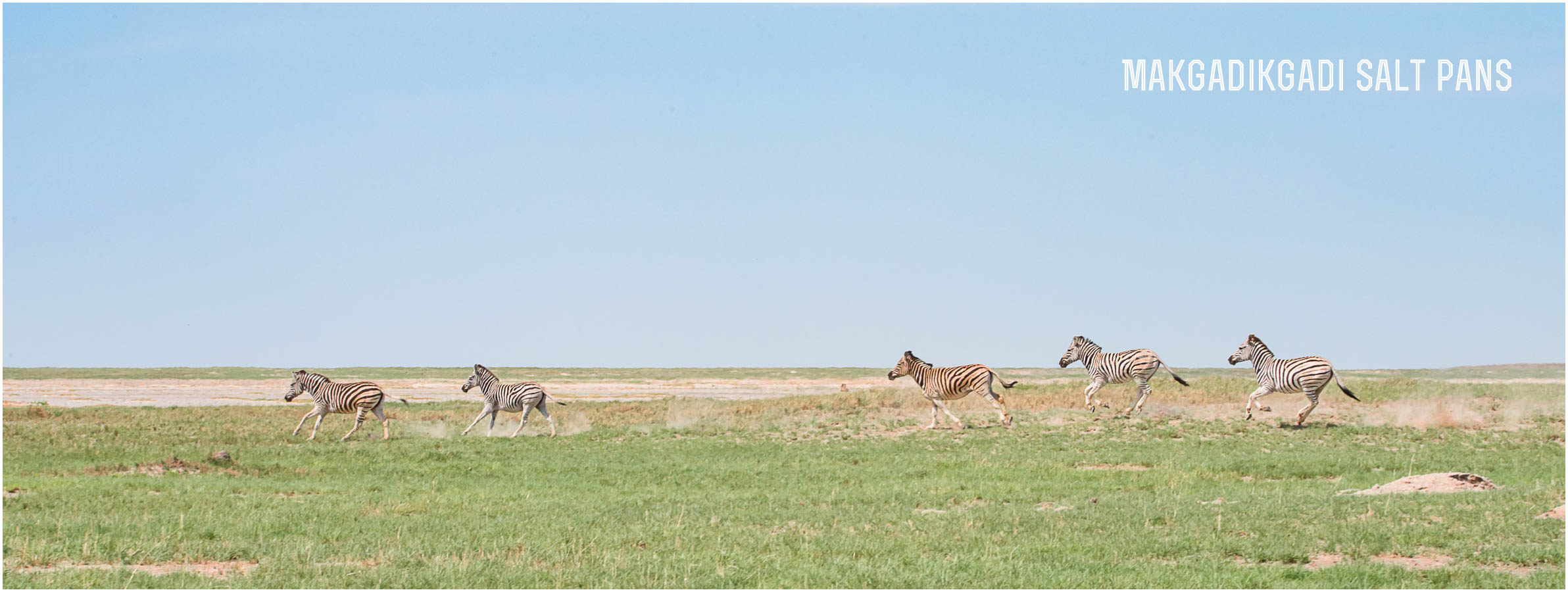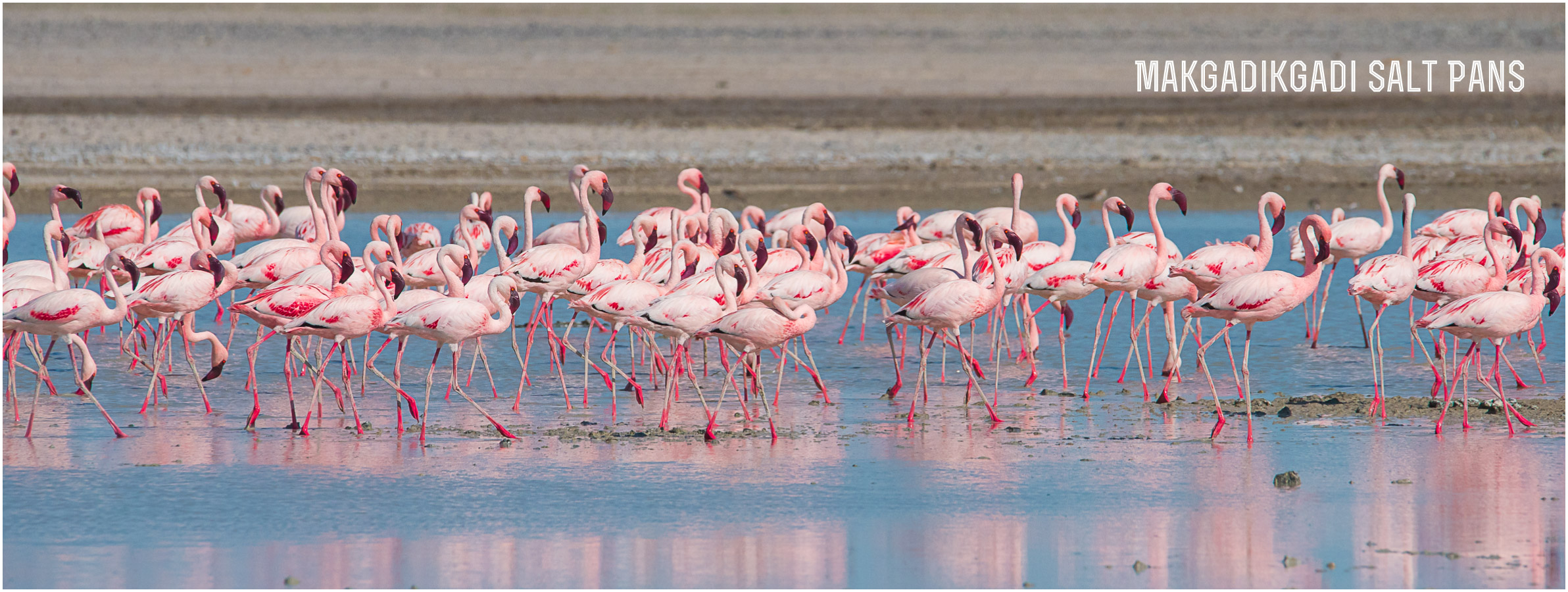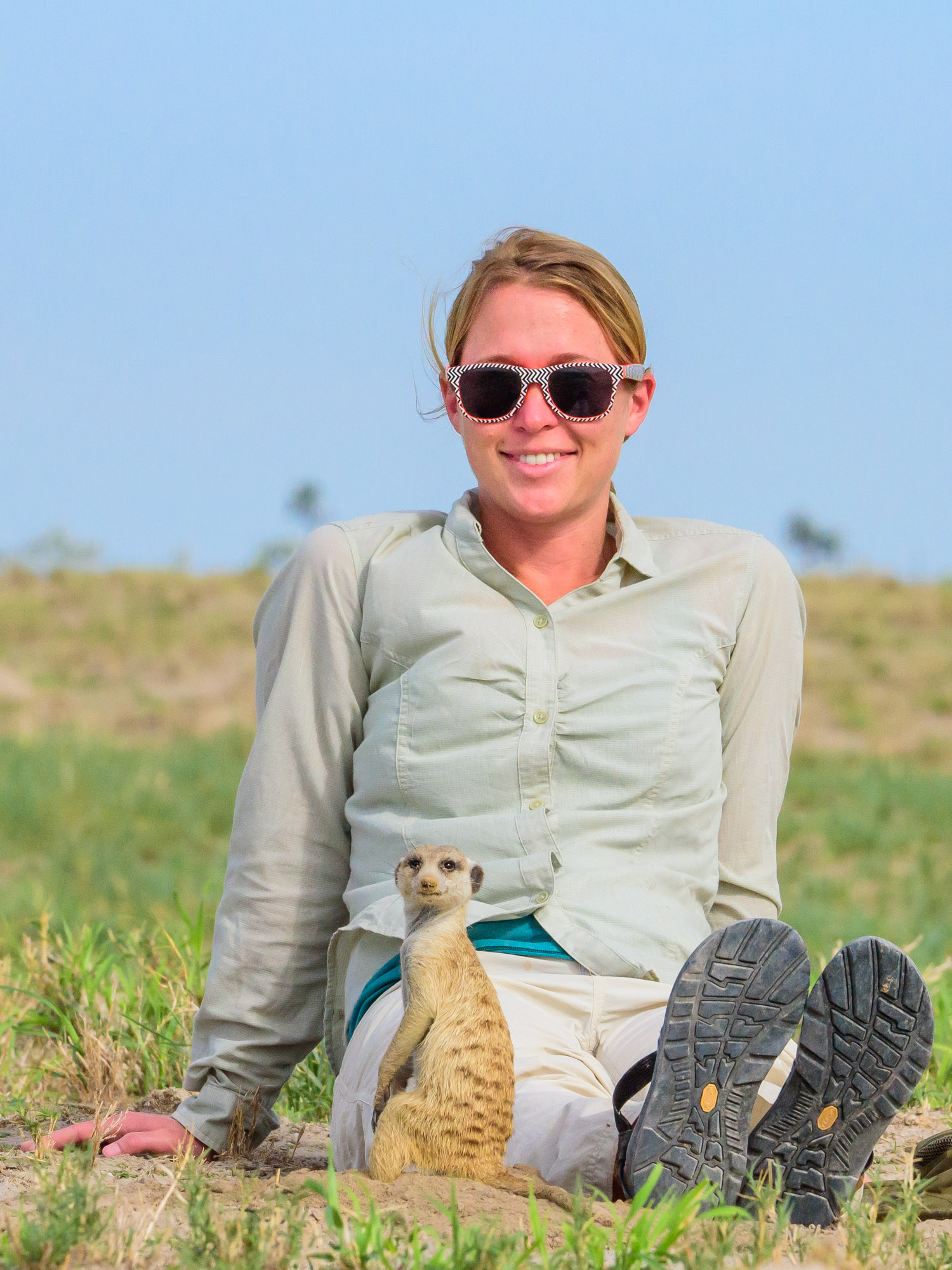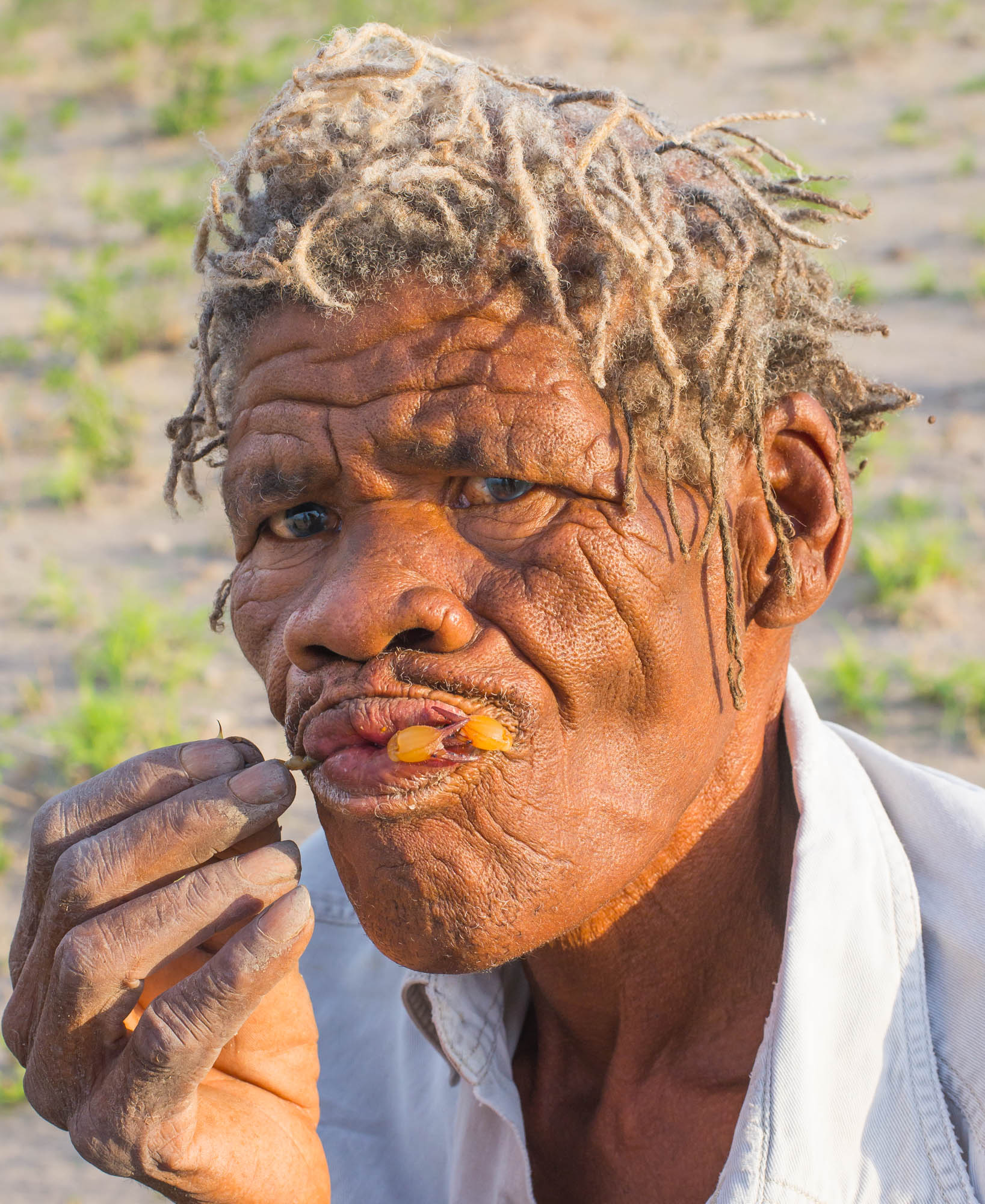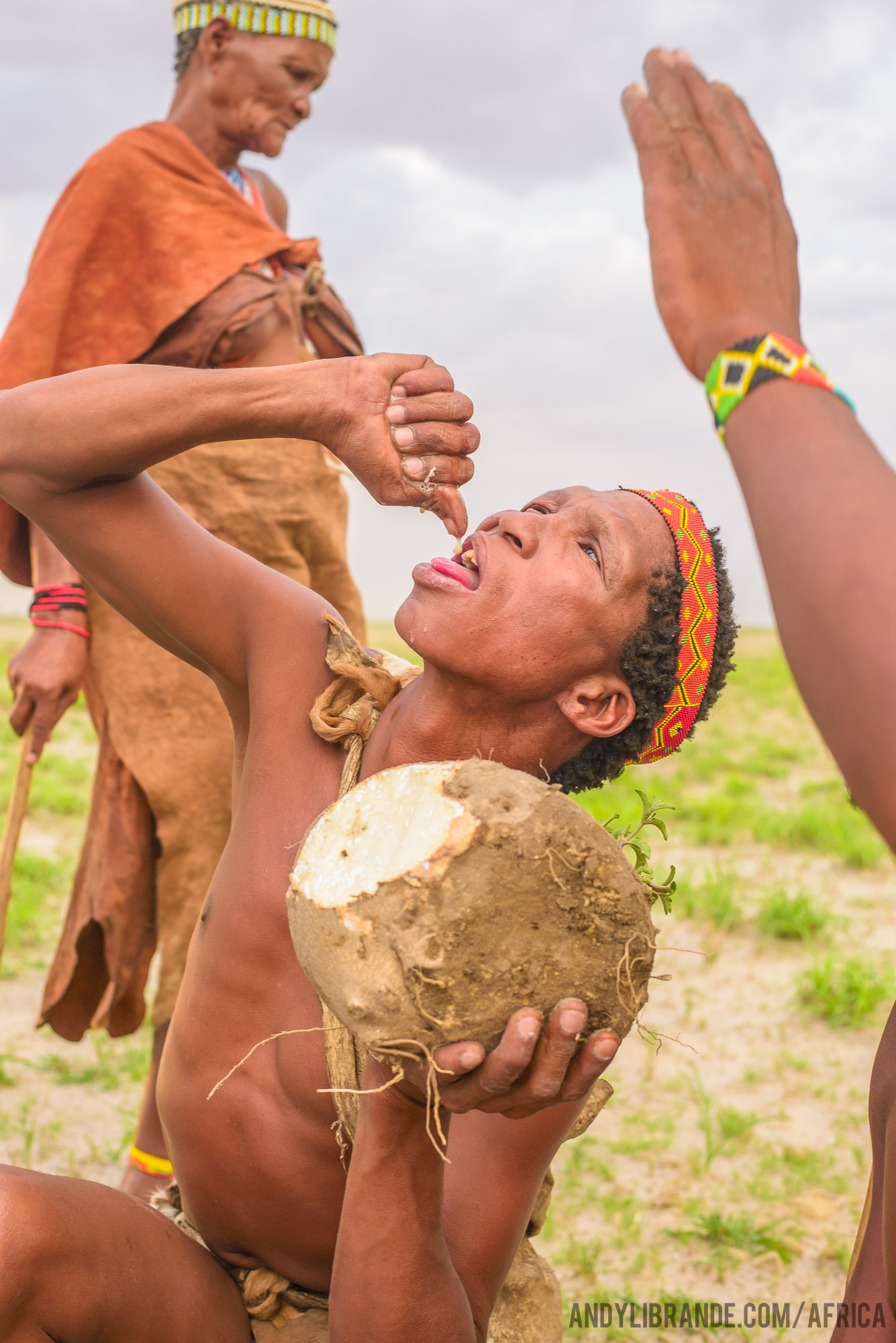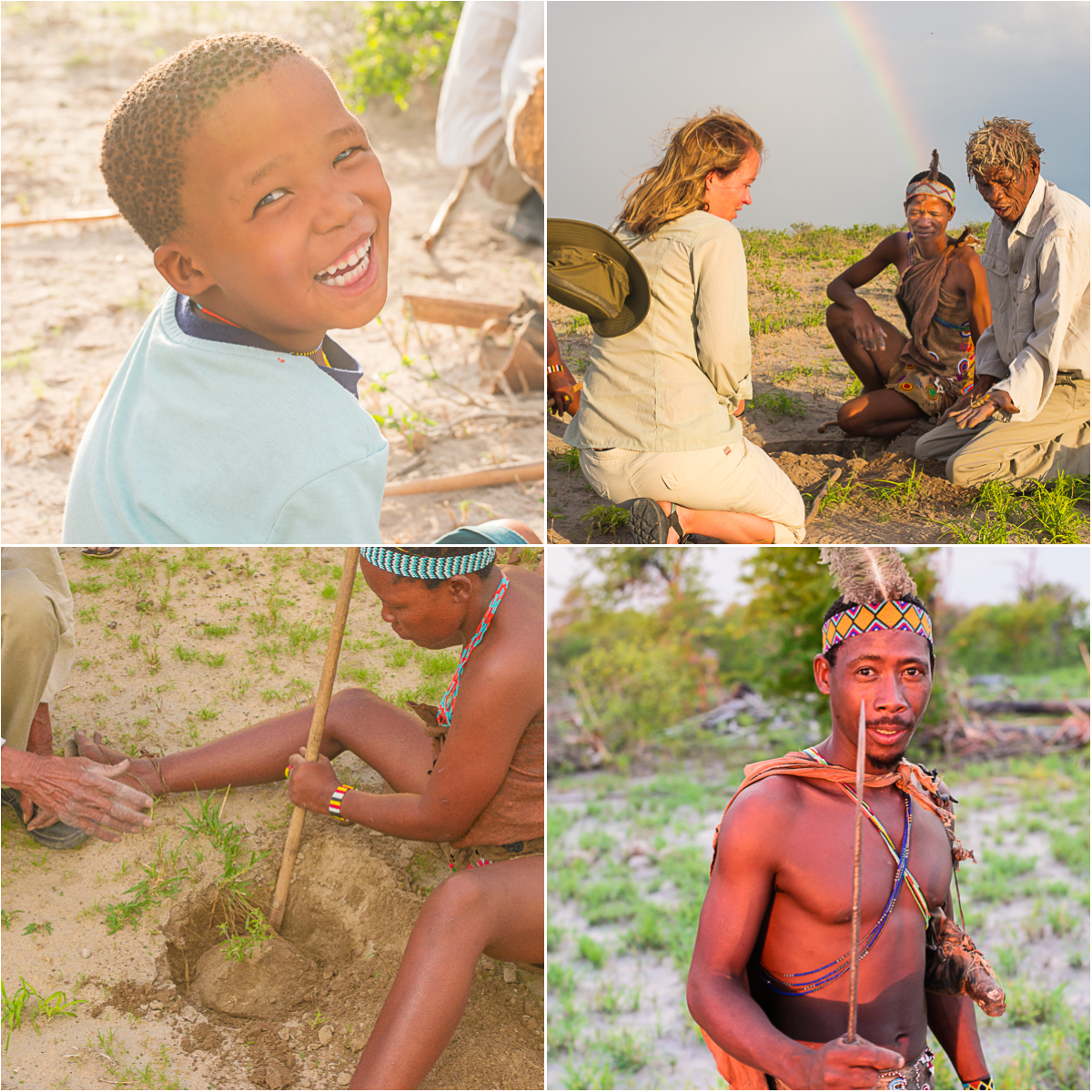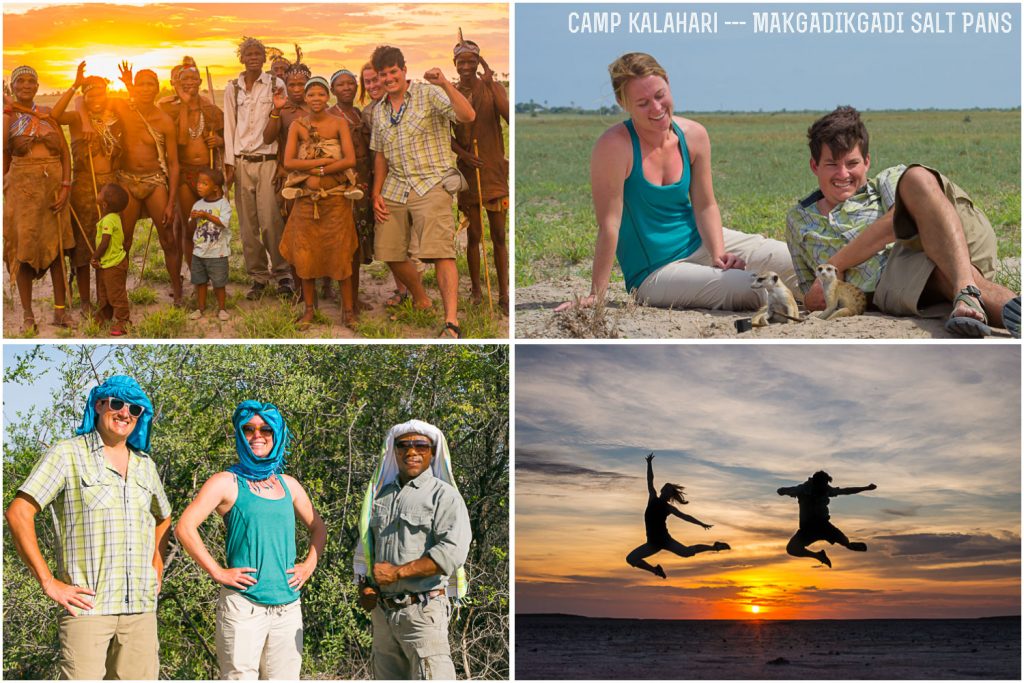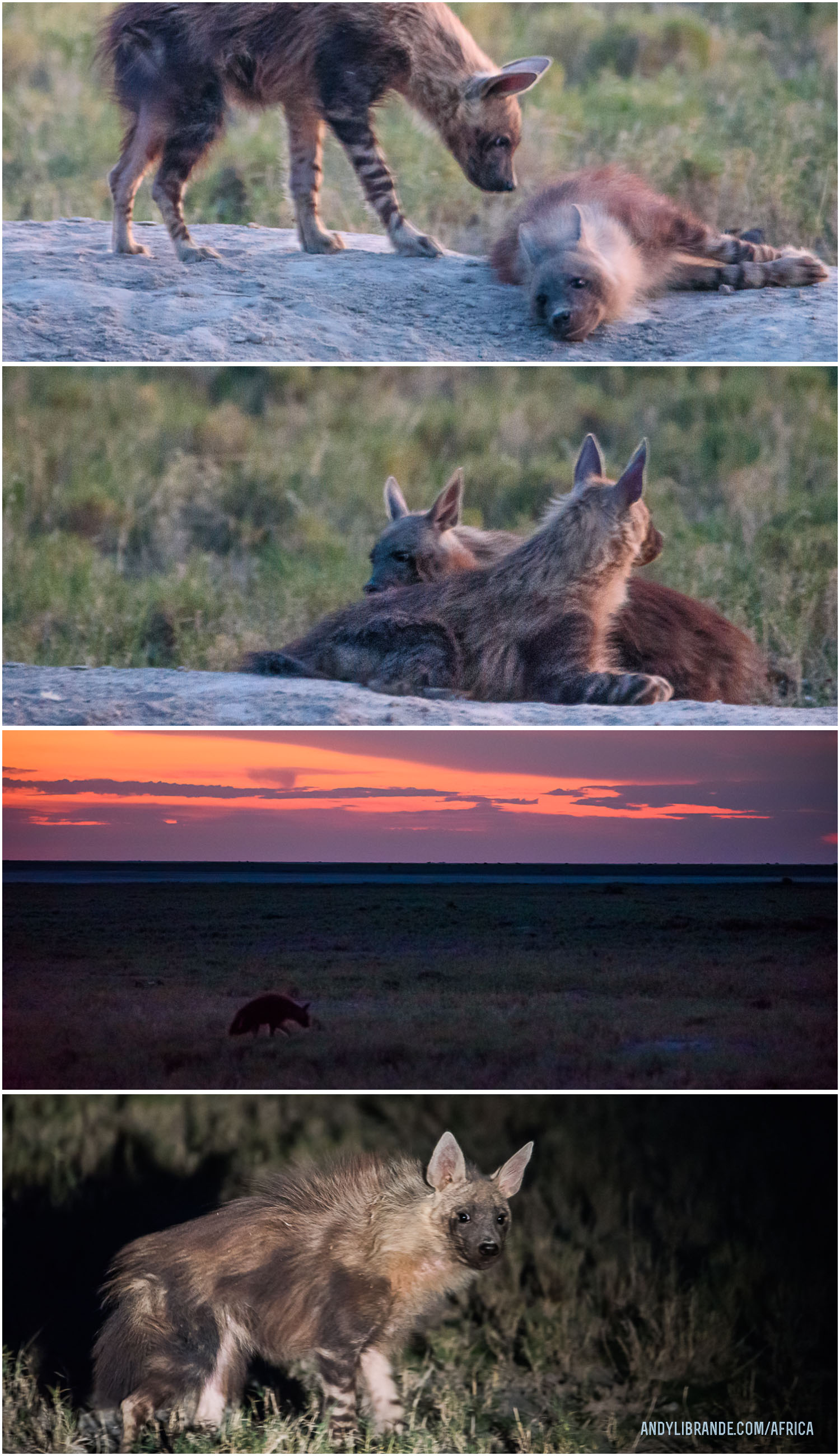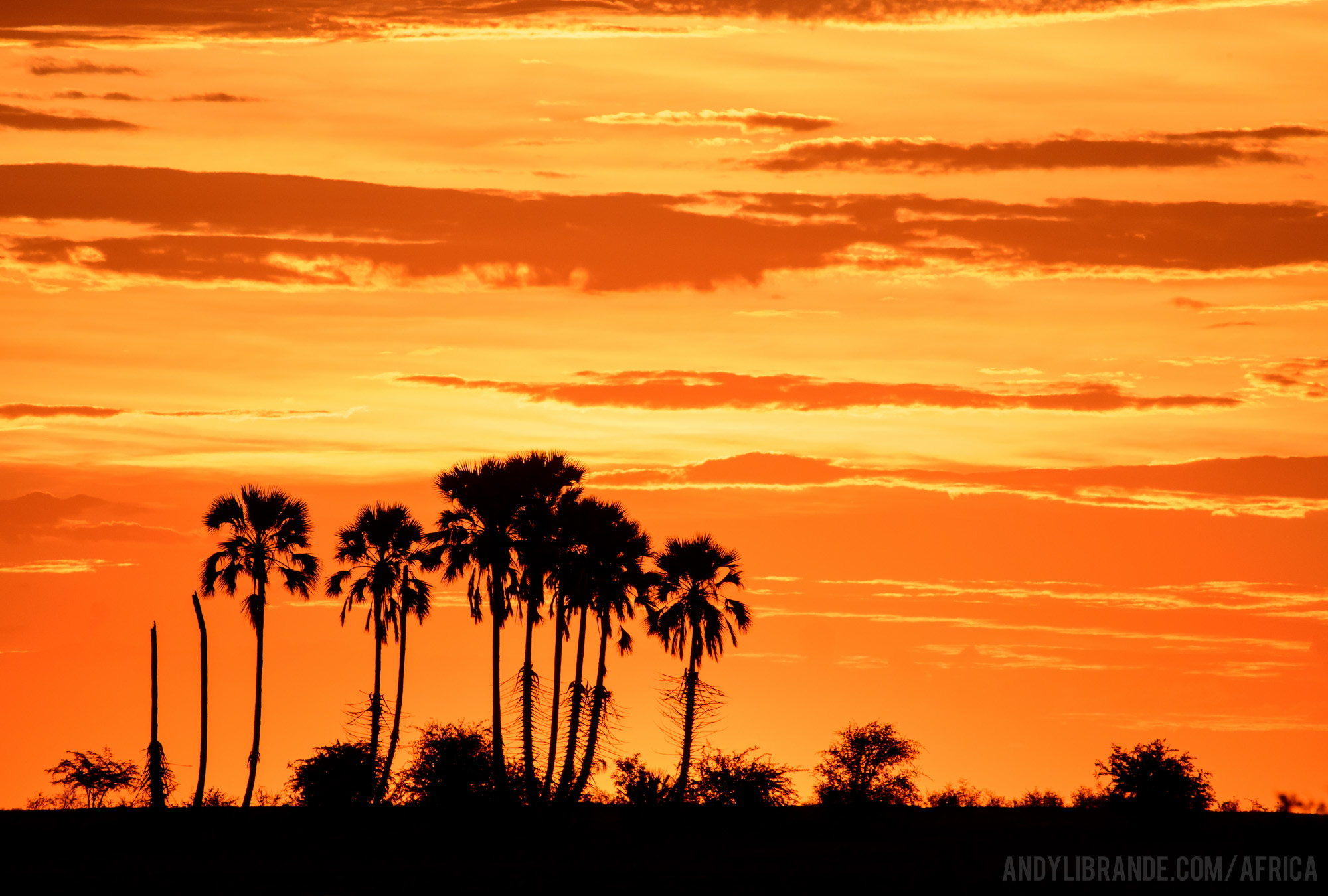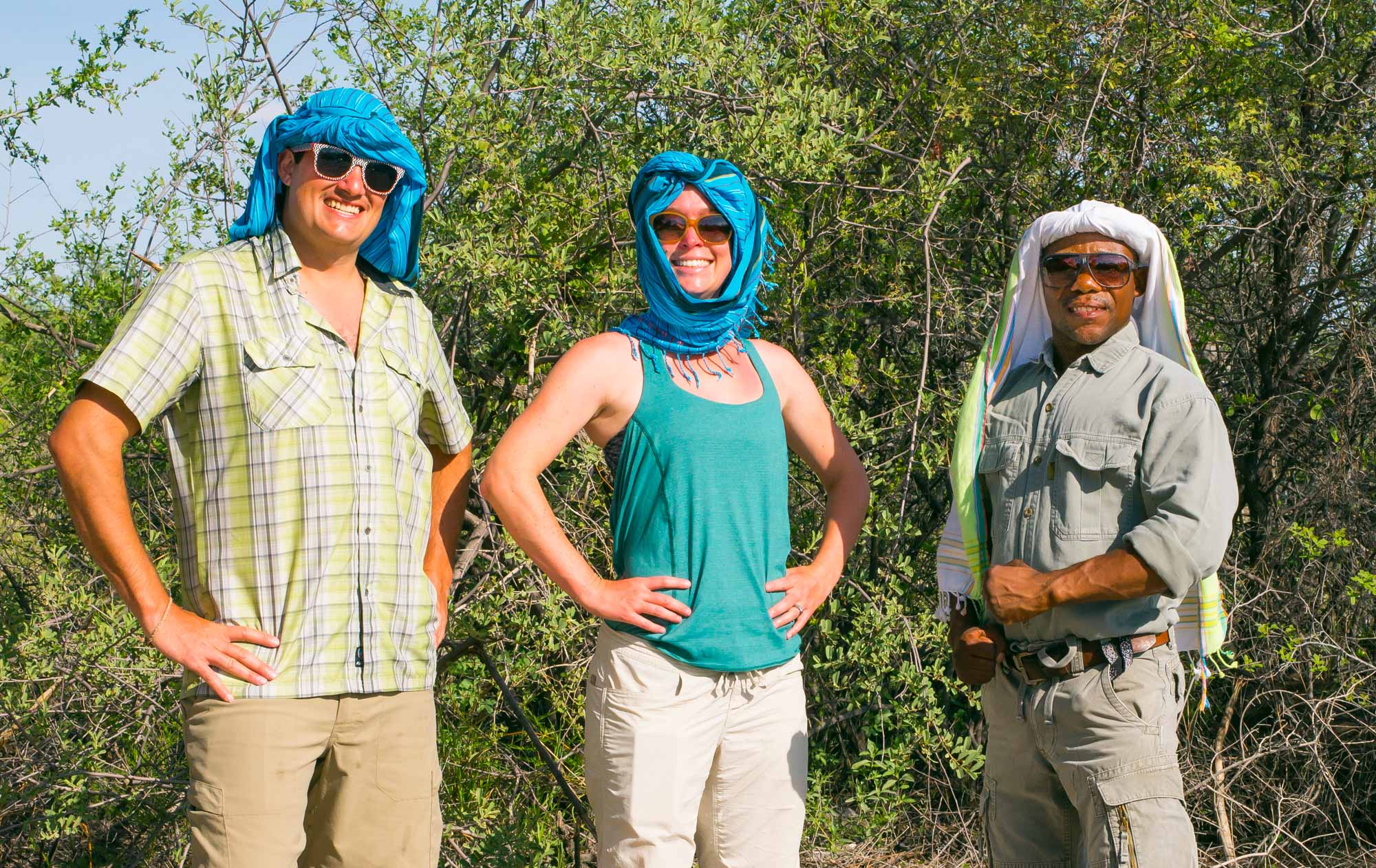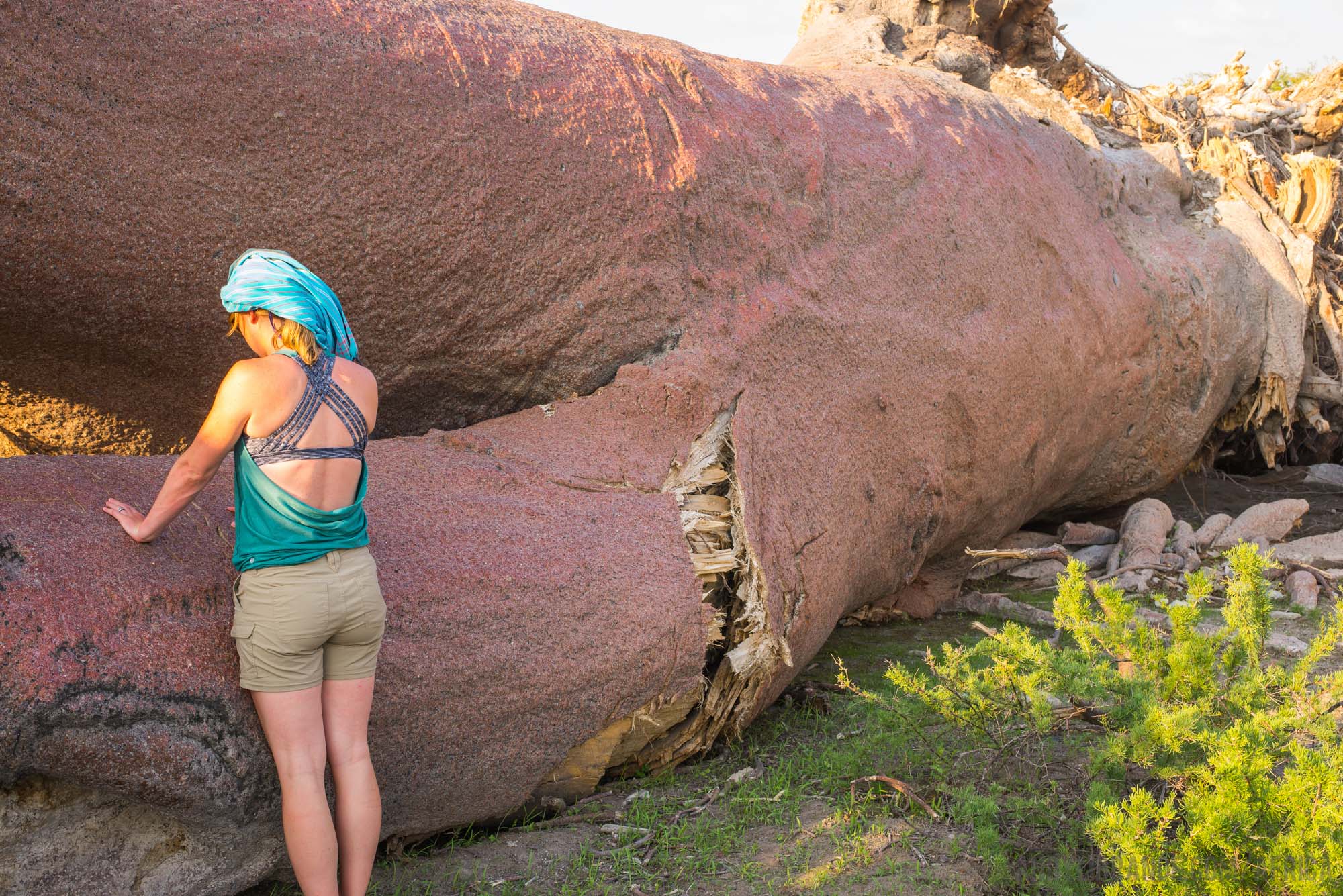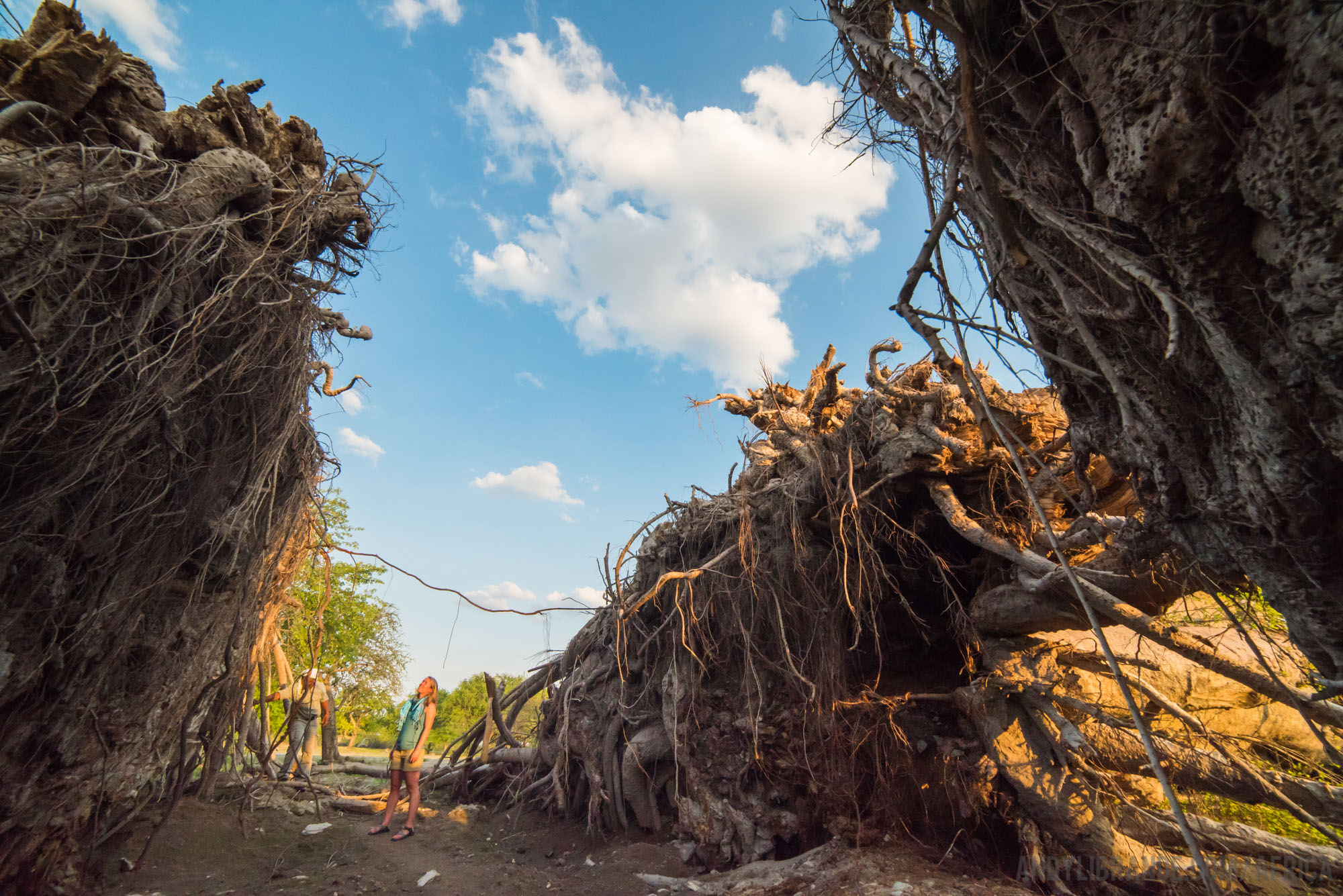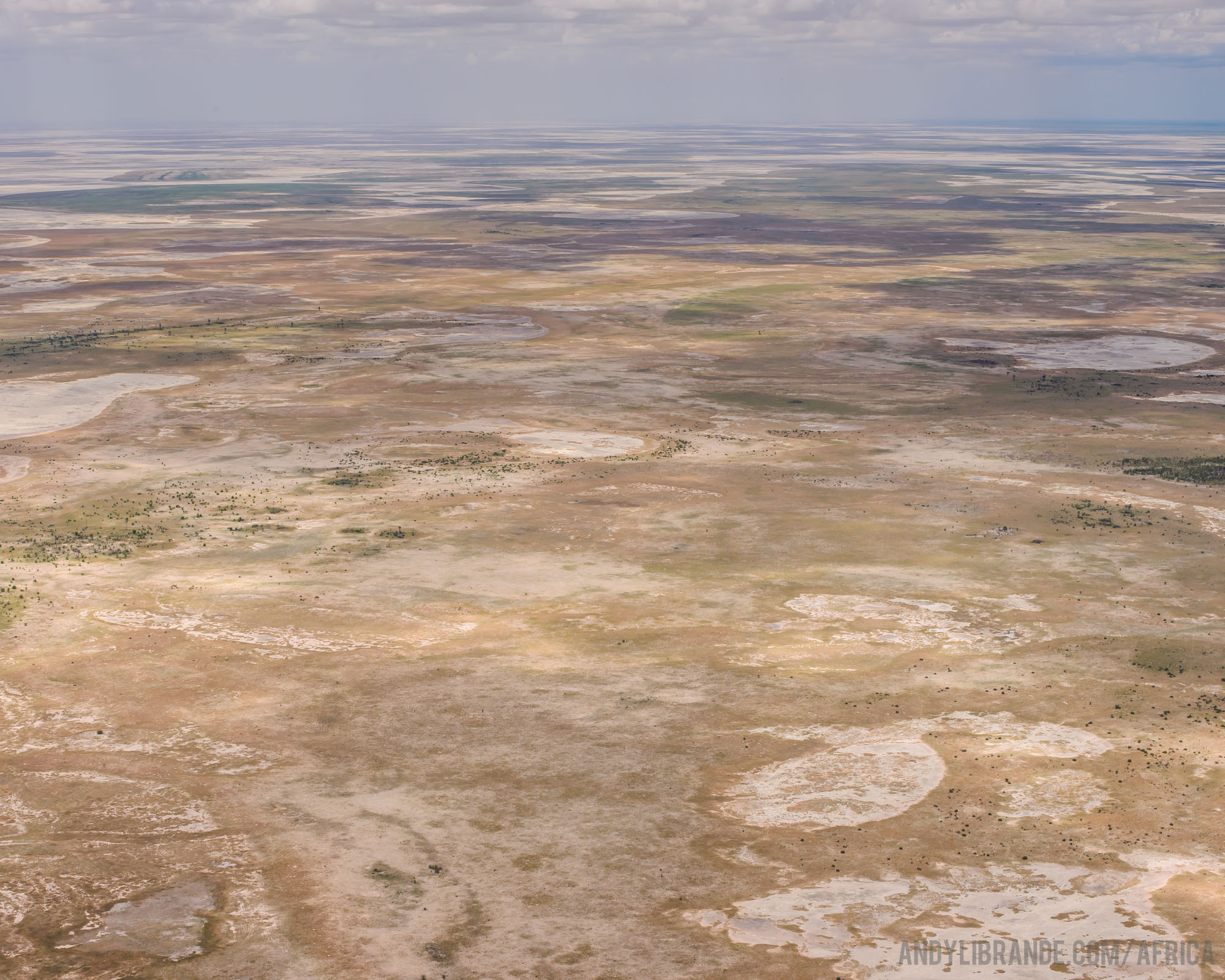Makgadikgadi Salt Pans Wilderness Safari
Navigation to Detailed Trip Reports and Photo Galleries:
MAKAGADIKGADI SALT PANS (Botswana):
Camp Kalahari (4 Nights) with Uncharted Africa
- Skipped 1st evening drive due to long transfer from CKGR
- 26th: Morning drive into National Park and saw the first of the Zebra herds coming into the area + Artifacts finding along ancient shoreline
- Evening San Bushman Walk
- 27th: Morning Meerkat Encounter + game drive
- Evening Game Drive (brown hyena)
- Morning game drive (flamingos)
- Evening Chapman’s Baobab tree
- Morning FINAL game drive – 4 hrs
Due to off-season luck we were the only ones in the Camp for 2 nights and the only ones in the Safari vehicle for all days!!
Guides = Dabe Camp Manager = Obert
Key Sightings:
- Chapman’s Baobab – thousand year old tree that recently toppled over
- Zebra Migrations
- Brown Hyena
- Flamingos
- Meerkats
- Porcupine
The Salt Pans surrounding Camp Kalahari and Jack’s Camp are incredible oasis’s settled on ancient migratory lands. The green season is really off season for this area which meant a lot of quiet time at the camp which was perfect end to our trip. The zebra migrations are beautiful and during our time there went from scarce sightings to covering the landscape. The rains hatch the brine shrimp which attracts Flamingos from thousands of miles away. Dabe our guide was the most scientific of our guides and we learned in depth about the this unique ecosystem.
A close encounter with the meerkats is a once in a lifetime experience!
Making Friends with Meerkats:
A morning with a Meerkat family was an encounter we will never be able to forget. Uncharted Africa (Camp Kalahari/Jacks Camp) has done something unique in that they have habituated Meerkat colonies which allows for us to hang-out with them, take naps with them, watch them hunt bugs, and play with them!!!
Like most animals, Meerkats are very shy and for two families of Meerkats in Botswana after many years of work they were able to get these cute little critters used to humans. To do that they literally just have a guy hangout by the den all the time and after a while the Meerkats get used to people and begin to climb the people to use for a higher vantage point to scout for possible predators.
The Meerkat family we hung out with that day took a while to come out of their den (it was a surprisingly cold morning with cloud cover), but once they sprouted out we had a great time following them around as they dug for inscects and played with each other. The head female was pregnant and ready to give birth very soon and as a result the other Meerkats were more shy then normal. Also the head male at this colony was quite a trickster as he once was chased from another colony and now has established his own colony (after mysteriously disappearing into the desert for a few months) by stealing women from the other colony!
This Meerkat was totally chill with us and fell asleep curled up next to us in the warm sun once it finally came out:
The incredible life of the San Bush people:
We made fire, played with scorpions, drank water from desert plants, made poison arrows, and took in a glimpse of what life has been like for the previous thousand years.
The scorpion stood with stinger up high and claws ready to strike. Held in the hand of the San bushman, he was taunting the already agitated scorpion after digging it out of the sand a few seconds earlier. The bushman had become quite casual with us after we started the spindle fire, and one of them kept pointing to their hand indicating that we should let this deadly scorpion crawl onto our palm. The hesitation from both of us was apparent as in our minds we calculated risk (4+ hours from the nearest hospital, likelihood of this thing actually stinging us, how cool we would be later, …). Caitlin finally has the ‘fuck it’ moment (uttered just audibly enough for me to hear), and sticks out her hand palm wide open ready to embrace this deadly creature. Our bushman was shocked but pleased and went to place it on her hand when Cobra, leader of the bushman and situated across the way from us, shouts something in their native tongue quickly halting the process. At least one of the group was intelligent enough that day.
Cobra cleans the dirt off the scorpion by holding the stinger and sticking it in his mouth:
One of our first activities was them showing us how to start a spindle fire. Being an Eagle Scout I grew up with some pretty hardcore scoutmasters that could start fires from about anything, however spindle fires in Colorado always seemed impossible and of all the types of fires I could start, I never had done a spindle fire or seen someone do it successful. The Kalarhari is built for spindle fires, the spindle itself is built from two pieces of wood a long straight spindle piece and the part that rubs spliced together with baobab twine. It then sits inside another piece of wood (known as the Fireboard) with a notch cut out that is a perfect ember creator. This sits ontop of Zebra dung which happens to work perfect as Zebras eat grass but don’t really digest it and as it bakes in the sun it dries completely out. An abundant source all over the Kalahari. With a bushman holding the Fireboard and 3-5 mins of spinning I was able to start my first spindle fire!! The bushman were stoked on this as their usual clients are not very active with them, whereas Caitlin and I dove into all of the activities.
Hundreds of miles from a river, water relief is found in the bi! bulb plant. The tiny little bit of green pops out of the ground identifying this unique plant that absorbs and holds water. You scrape off a little and squeeze the fibers in your fist letting the water drip down your thumb into your mouth (as shown below). We both tried the water and while bitter you can easily see how that could sustain you in this desert far from running water.
Photo’s of Andy+Caitlin:
Brown Hyena in the Makgadikgadi Salt Pans
BROWN Hyena’s are a totally different species that is adapted to live in desert environment. Much smaller than the Spotted Hyena and the most rare of the Hyena species living only in the deserts of southern Africa. They tend to be more solitary, extremely shy to humans, and nocturnal. Their long hair easily distinguishes them. We saw these two Brown Hyena’s just outside of their den where they were getting to the age where it is time for them to leave the den life.
Very little is known about Brown Hyena’s and our guide in Camp Kalahari (guide = Dabe) has been working with researchers for years studying the habits of the Brown Hyena. To study them he would spend weeks camping in the remote salt pans and following the adults mostly working at night. He once followed an hyena as it walked in a straight line for nearly 100 kilometers! One key item to his research was that ~80% of the food consumed by the Brown Hyena’s was bugs and insects reflecting them being adapted to their desert surroundings vs the spotted hyenas which do not eat any insects.
African Sunset over the Makgadikgadi Salt Pans:
The saline content allows for these Palm Trees to grow in the middle of a desert far from any flowing water. They add quite a bit of drama to this otherworldly landscape that consists of vast salt pans, remnants of an massive inland lake. Seasonal rains brings life to the area and allows the trees to grow quickly.
The other amazing thing about this photo is that as we were stopped in a spot to watch this sunset our badass guide named Dabe told us of a story of his first safari that he lead 15+ years earlier:
“This bush you are standing by saved my life once, this was my first safari as a guide and was leading a married couple on the tour of the Salt Pans. We had just pulled out of camp when we stopped right here for a brief look over the plains. Suddenly a massive Kalahari male Lion charged the vehicle (pride was hidden out of sight just over a small hill) and rushed at the stopped vehicle. This lone bush happened to the only object around and luckily placed between the lion and the vehicle and was just enough to stop the lion from leaping into the truck.”
Dabe, a badass Botswana Safari Guide:
This is our badass guide Dabe. A number of years ago he miraculously stopped a Lion charge by throwing sand in its face and roaring back at the lion! Now imagine how close the lion must have been where tossing sand would be effective….
Dabe was our guide at Camp Kalahari in the barren salt pans of the Makgadikgadi where we spent our last 4 nights of the trip. As we cruised this vast desert that was full of zebra, wildebeest, foxes, and meerkats, he regaled us with limitless stories of incredible wilderness experiences.
Growing up as a San Bushman in the remote deserts of the Kalahari, his upbringing was radically different than from the conveniences of our city based world. San Bushman have been so isolated to the Kalahari desert for thousands of years and have developed unique physical characteristics to coop in such an extreme environment.
Masters of their environment, his expansive knowledge of the entire ecosystem from the dirt, to the grasses, to the insects, to the birds, to the animals, was impressive. Everyday was a science lesson, an animal behavioral lesson, a history lesson, and left us inspired. In Botswana to become a guide you have to go through extensive schooling, similar to a college education. You have to know all aspects of the world around you as they are all intertwined, and you must spend years in the field progressing through various levels of guiding independence. Every guide we had was incredible and had diverse backgrounds. Our already extensive experience with wilderness was exponentially expanded through their intimate knowledge of delicate natural processes.
He was only 17 when he began guiding at the prestigious Jack’s Camp and has guided Prince Harry and plenty of other world powers!
The afternoons were getting really hot while we were there (90-100 degrees) so he showed us this great headscarf trick. Soak a thin cotton headscarf in water, wring it out, wrap it tight around your head and it cools you down real quick. Start driving in an open-aired vehicle and it becomes instant AC and can actually make you cold. A relief.
Chapman’s Baobab: The Death of a 1,000+ Year old Tree
For thousand of years this tree ruled the horizon growing so tall to be used as a navigational beacon and so wide that 15 peoples arm spans are barely enough. Days before we stepped foot into Africa for the first time this mighty giant tumbled. A powerful and humbling encounter as we paid our respects while pondering this rapidly changing planet.
1 Year Follow-up: http://geographical.co.uk/places/forests/item/2137-the-enduring-legacy-of-the-fallen-baobab
This is a write-up from another person we met while at Camp Kalahari who was with Ride Botswana trip: http://www.ridebotswana.com/a-moving-tribute-to-chapmans-baobab/
Death is the last step in life.
A tree that has existed when the Roman empire was still flourishing. Potentially 100 human generations ago a seedling took root in the sandy, dry, climate of the Kalahari desert in the middle of Botswana.
For a thousand years that seedling steadily grew, surviving an immeasurable number of droughts, fires, and hungry animals. This seedling grew into a towering creature surrounded by a sea of nothing, Growing proud, strong and unique.
An expedition in the 1860’s lead by James Chapman and Thomas Baines, camped under this tree and was the first Westerners to document this unexplored section of the world. In 1860 this Baobab tree had already seen thousands of sunsets. From drawings made by Thomas Baines it was clear that in the last 150 years the tree has only grown slightly.
As a newly found human landmark this tree became famous as the original post office. People would leave notes, letters, and shipments at the base of this tree hoping some traveler would carry their message to distant lands.
In the early morning on January 7th, 2016 that giant came crashing down to the earth. The only witnesses being a local cattle herder and a Guide from Uncharted Africa. The sound was tremendous. The sight being grisly.
Thousands of years this Baobab had dominated the land. A landmark for every living creature in this vast, isolated area. Then one day it was gone. The concealed pain in our guide’s persona was evident the whole time we were there. His ancestors had been a part of this tree for untold generations.
This ancient giant fell 2 days before we left on our trip to Africa…. Logically the math says the chances of that happening is near impossible.
A tree who is estimated to be 1,000 to 5,000 years old suddenly dies in your lifetime it makes you think real hard about what is happening around us.
The size of the tree is incredible. Standing on top of it felt like you were riding a giant whale. Three distinct sections split falling in different compass orientations. Caitlin is leaning against the side that was facing the sun; the warmth of the tree resonating through her soul.
Touching it felt like it was still breathing. The more you interact with it the more power you feel.
Standing where no human or creature had stood for hundreds, maybe thousands of years. The root system covered this soil for untold lengths of time, now suddenly thrust into the air. The size of the root ball was just incredible to comprehend, 10-15 ft on each side.
Our investigation made it easy to understand how this giant fell. A wide but incredibly shallow root system. The middle completely devoid of any major anchors into the ground. Years of low water and a tree that never stops growing, collided at the wrong time resulting in devastating destruction.
This was our last night in Africa. Our incredible trip full of the most amazing wildlife and wild landscapes. We are lovers of the natural world and this was a sobering reminder of how precious life is and how there is only one mother earth.
The sunset crested over the plains as we finally departed from this wonderous giant.
Aerial over the Makgadikgadi Salt Pans as we flew back to Maun to Catch our Plane to Johannesburg:
Navigation to Detailed Trip Reports and Photo Galleries:

